Sorted by date Results 1 - 25 of 185

All-terrain vehicles (ATVs) and utility-terrain vehicles (UTVs) can be a great resource for work or play for many user groups across North Dakota. However, due to the high fire risk in many locations across the state, they can also be a cause of concern if precautions are not followed while operating. To protect people and property, NDSU Extension, the North Dakota Parks and Recreation Department, and the North Dakota Game and Fish Department are encouraging ATV and UTV owners to practice fire...

As frost begins to appear across parts of the Northern Plains, temperatures have been low enough to cause leaf burning and plant stress in many frost-sensitive annual and perennial forage plants. James Rogers, North Dakota State University Extension forage crops production specialist, highlights three main frost effects: prussic acid production, nitrate accumulations and bloat. "The most concerning of these frost effects is prussic acid which can develop in the sorghum family of plants," Rogers...

Due to a challenging spring planting season, corn has varying moisture levels between fields and even within fields. This may be due to replanted portions of fields, with the initial planted acres at about 15% while the replanted acres are still in the upper 20% moisture range. "One option is to segregate harvest as much as possible," says Ken Hellevang, professor emeritus and retired North Dakota State University Extension agricultural engineer. "Harvest the initial planted acres now, then come...

This year presented a significant challenge for soybean producers due to cool and wet conditions causing prolonged iron deficiency chlorosis (IDC) symptoms in North Dakota soybean fields, says Ana Carcedo, North Dakota State University Extension broadleaf crops agronomist. NDSU conducts annual research on soybean varieties to determine their tolerance to IDC. This information is crucial for farmers who deal with IDC in their fields annually. Choosing soybean varieties less susceptible to IDC is...

Have you ever wondered about the agronomic and environmental benefits of cover cropping? Or have you considered planting cover crops in your operation but are unsure where to start? North Dakota State University Extension will host cover crops field days at three locations on Sept. 10, 11 and 12. The dates, locations and links to detailed information are: - Sept. 10 in Minot at the North Central Research Extension Center - ndsu.ag/covercropsncrec - Sept. 11 in Dickinson at the Dickinson...

The profitability of any business is crucial, and livestock production is no different. With most revenue originating from the sale of calves produced, retaining non-pregnant cows in a cow-calf operation is hard to justify. Therefore, this time of year is traditionally pregnancy detection season. "Cattle producers have or soon will be removing bulls from their spring-calving cow herds, bookending another breeding season, and will need to identify which cows will calve next year before winter...

Fall bird migration has begun, and now is the time to review and reimplement biosecurity protocols to reduce disease transmission from wild to domestic birds. Highly pathogenic avian influenza (HPAI) is a disease carried by wild birds that can affect domestic birds. Avian influenza is caused by the influenza Type A virus (influenza A). The virus is shed in the feces and respiratory secretions of infected birds and is able to survive for weeks in cool, damp environments. Migration can be...

Proactive management of livestock prior to and during heat events is critical in protecting livestock from heat stress. North Dakota State University Extension livestock specialists encourage livestock owners to monitor weather forecasts and anticipate when conditions may pose a significant risk to livestock. Such conditions exist when above-average temperatures collide with increased humidity. These conditions are expected to hit many parts of North Dakota this week, with many cities...

In a cow-calf operation, open cows bring disappointment on the day of pregnancy diagnosis. To ensure that a bull is capable of breeding, North Dakota State University Extension specialists recommend that bulls undergo a breeding soundness exam prior to the breeding season. "The role of bulls on cow-calf operations is to get cows pregnant," says Lacey Quail, Extension livestock management specialist at the NDSU North Central Research Extension Center. "Considering that 92% of cows and 76% of...
The North Dakota State University Research Extension Centers’ annual field days are set. The events take place at the Research Extension Center sites across the state and feature speakers, tours and field demonstrations for farmers, ranchers, crop advisors, landowners, horticulturalists and local stakeholders. “The agricultural research conducted at our NDSU Research Extension Centers provides research-based solutions that advance agricultural production systems in a variety of areas, including agronomy and crop production, livestock and ran...
The North Dakota State University Research Extension Centers’ annual field days are set. The events take place at the Research Extension Center sites across the state and feature speakers, tours and field demonstrations for farmers, ranchers, crop advisors, landowners, horticulturalists and local stakeholders. “The agricultural research conducted at our NDSU Research Extension Centers provides research-based solutions that advance agricultural production systems in a variety of areas, including agronomy and crop production, livestock and ran...

North Dakota State University Extension has developed a spreadsheet to help farmers analyze and make prevented-planting decisions. "Producers in North Dakota are waiting for fields to dry out so they can start field work and crop planting," says Ron Haugen, NDSU Extension farm management specialist. "If wet conditions continue in certain areas of the state, it will prevent some producers from seeding all their acres before the dates that crop insurance coverage starts to decrease. Now may be a...

The North Dakota State University Research Extension Centers' annual field days are set. The events take place at the Research Extension Center sites across the state and feature speakers, tours and field demonstrations for farmers, ranchers, crop advisors, landowners, horticulturalists and local stakeholders. "The agricultural research conducted at our NDSU Research Extension Centers provides research-based solutions that advance agricultural production systems in a variety of areas, including...

Face flies, horn flies and stable flies are the most common and most treated pests on North Dakota livestock operations. Left uncontrolled, these pests can cause significant loss in livestock production. Fortunately, North Dakota State University Extension specialists say that the proper pest management strategy can provide effective control. While integrated pest management is commonplace for controlling crop pests, similar concepts can apply to controlling livestock pests, according to...

Attending the weeklong National 4-H Conference in Washington, D.C, helped Burleigh County 4-H member Elizabeth Sikes feel more confident in her ability to lead. "The National 4-H Conference was one of my favorite things I have done through 4-H and has helped me further develop my leadership skills," Sikes says. "It was a wonderful experience, and I loved meeting people from all over the U.S. and from different territories." Sikes was one of four North Dakota 4-H'ers who attended the National...
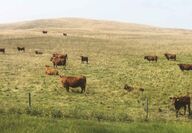
Ranchers depend on grass as a primary source of forage, whether it be rangeland, pasture or hay. While they carefully select species to plant as cover crops or plan a total mixed ration, many ranchers do not know the primary grass species their livestock consume. “Knowing the predominant grass species is important because not all grass is equal,” says Kevin Sedivec, North Dakota State University Extension rangeland management specialist. “Different species have different growth patterns and n...
The warmer winter and early spring have increased the potential for grain storage problems and the need for grain monitoring and management, says Ken Hellevang, North Dakota State University Extension agricultural engineer and grain drying expert. Stored grain temperature increases in parts of a bin in the spring, which is not only due to an increase in outdoor temperatures but also due to solar heat gain on the bin. Solar energy produces more than twice as much heat gain on the south wall of a bin in spring as it does during the summer. That,...
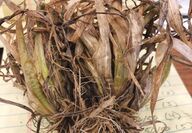
If plants were well established prior to the onset of winter and had the opportunity to harden and tiller, chances of survival are very good, but forage production may be impacted. This year's unusual winter has led to questions for farmers and ranchers who grow forage crops in North Dakota. The lack of snow cover has left winter crops uninsulated from cold temperatures for much of the winter. Recent extreme temperature fluctuations have led to concerns about possible damage to winter annual...
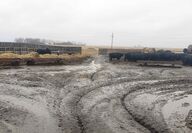
Snow melt, rain and cattle create a recipe for muddy feedlots. While leading to uncomfortable conditions for ranchers, mud is stressful to livestock. Just a few inches of mud requires extra effort for cattle to walk and may lead to a loss of production or weight gain, according to North Dakota State University Extension specialists. As mud depth increases to between 4-8 inches, feed intake can decrease up to 15%. When mud is up to 24 inches deep, feed increase can decrease up to 30%. The...

A juvenile goat in Minnesota recently tested positive for highly pathogenic avian influenza (HPAI). While HPAI has been detected in predatory mammals that prey on infected birds, this is the first identified case of HPAI in domestic livestock in the U.S. The goat lived on the same premises where a poultry flock tested positive for HPAI in late February. The goat shared the same pasture and sole water source as the poultry flock. HPAI is a known disease of wild and domestic poultry and...
In November 2023, the U.S. Court of Appeals for the Eight Circuit issued a ruling overturning the Environmental Protection Agency (EPA)’s final rule of August 2021, which revoked all food crop tolerances for chlorpyrifos. The Eighth Circuit Court’s decision was based in part on the fact that the EPA had issued a Proposed Interim Decision (PID) in 2020, which included 11 chlorpyrifos crop uses that the EPA determined met safety tolerances. Before the PID could be finalized, the U.S. Court of Appeals for the Ninth Circuit issued a ruling ord...

The warmer winter and early spring have increased the potential for grain storage problems and the need for grain monitoring and management, says Ken Hellevang, North Dakota State University Extension agricultural engineer and grain drying expert. Stored grain temperature increases in parts of a bin in the spring, which is not only due to an increase in outdoor temperatures but also due to solar heat gain on the bin. Solar energy produces more than twice as much heat gain on the south wall of a...
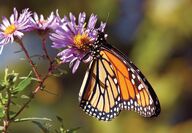
Do you want to grow a beautiful yard and garden? North Dakota State University Extension will be broadcasting its Spring Fever Garden Forums online from March 25 to April 15. The live forums will be held on Monday evenings, from 6:30 to 8:30 p.m. CDT and are open to all gardeners. Topics will include how to grow vegetables and fruits, divide perennial flowers, attract pollinators, control weeds, select fast-growing trees, improve garden soil and much more. "This is a great opportunity for...
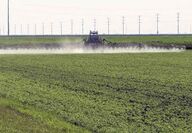
In November 2023, the U.S. Court of Appeals for the Eight Circuit issued a ruling overturning the Environmental Protection Agency (EPA)'s final rule of August 2021, which revoked all food crop tolerances for chlorpyrifos. The Eighth Circuit Court's decision was based in part on the fact that the EPA had issued a Proposed Interim Decision (PID) in 2020, which included 11 chlorpyrifos crop uses that the EPA determined met safety tolerances. Before the PID could be finalized, the U.S. Court of...

The all sheep and lamb inventory in the U.S. on Jan. 1 totaled 5.03 million head, down 2% from 2023, according to the U.S. Department of Agriculture's National Agricultural Statistics Service. The report indicated a year-over-year decrease of 2% in North Dakota, 3% in Minnesota and 9% in South Dakota. "U.S. lamb consumption was 1.1 lbs. per person per year for 2023, and has room for growth domestically and abroad," says Travis Hoffman, NDSU Extension and UMN Extension sheep specialist. "We have...